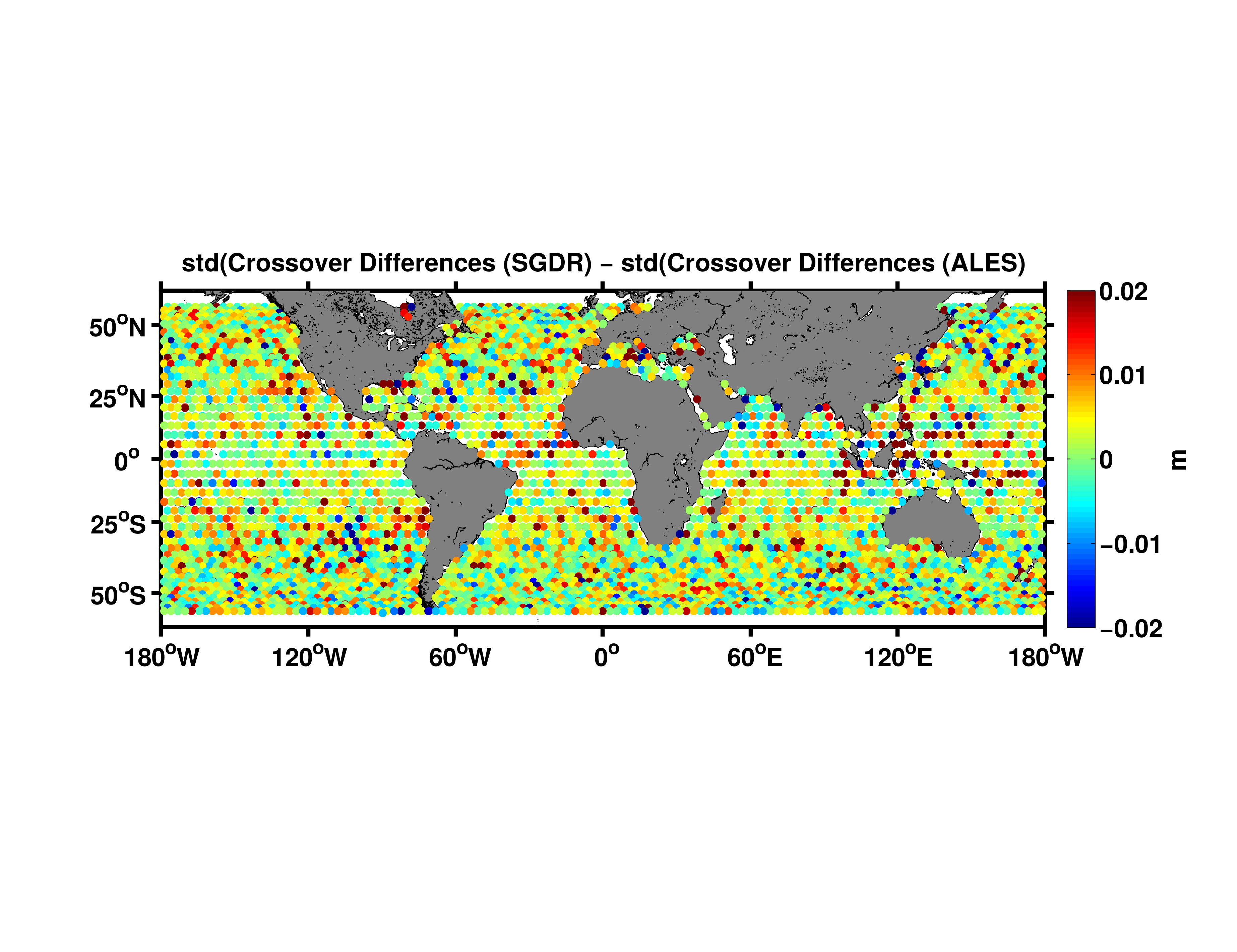Abstract's details
Validation of a global dataset based on subwaveform retracking: improving the precision of pulse-limited satellite altimetry
Event: 2017 Ocean Surface Topography Science Team Meeting
Session: Regional and Global CAL/VAL for Assembling a Climate Data Record
Presentation type: Oral
The advantages of reprocessing the data from pulse-limited altimetry with the Adaptive Leading Edge Subwaveform Retracking (ALES) algorithm have been already demonstrated at the coast. We demonstrate in this talk that the same strategy improves the precision of satellite altimetry in the global ocean, presenting the new global ALES dataset, which is available through the Open Altimetry Database (OpenADB, webpage: openadb.dgfi.tum.de).
The validation work consists in a global crossover analysis, a high-rate noise assessment and a spectral analysis. The sea level differences at crossovers are computed using the same procedure for the ALES and the available Sensor Geophysical Data Records (SGDR) at 1Hz. Preliminary results on the Jason-2 missions shows that the standard deviation of the sea level differences at the crossover points is lower in ALES in over the 65 percent of the locations (see Figure). The spectral analysis shows that the use of ALES improves the description of the spectral content at wavelengths shorter than 100 km, i.e. reduces the spectral hump. The high rate noise assessment is based on consecutive differences of uncorrected sea level height (except that the range is corrected for the sea state bias), computed by subtracting the estimated range to the orbital altitude. It shows that, after the sea state bias correction recomputed using ALES Significant Wave Height and Backscatter Coefficient, the ALES ranges are 0.5 cm less noisy than the corresponding SGDR data at a typical significant wave height of 2.5 m in the open ocean (6 percent improvement).
A more detailed analysis will be provided in the talk, considering deep and shallow waters and applying the same analysis to other pulse-limited missions. Our conclusion is that the use of the ALES global dataset can improve the description of the global ocean circulation and the understanding of the scales of oceanic variability below 100 km for over 20 years of data, which is now of particular importance given the availability of more precise Delay-Doppler altimeters and in preparation to the SWOT mission. Further improvements to the dataset will be brought in the near future by a dedicated sea state bias model for ALES.

The validation work consists in a global crossover analysis, a high-rate noise assessment and a spectral analysis. The sea level differences at crossovers are computed using the same procedure for the ALES and the available Sensor Geophysical Data Records (SGDR) at 1Hz. Preliminary results on the Jason-2 missions shows that the standard deviation of the sea level differences at the crossover points is lower in ALES in over the 65 percent of the locations (see Figure). The spectral analysis shows that the use of ALES improves the description of the spectral content at wavelengths shorter than 100 km, i.e. reduces the spectral hump. The high rate noise assessment is based on consecutive differences of uncorrected sea level height (except that the range is corrected for the sea state bias), computed by subtracting the estimated range to the orbital altitude. It shows that, after the sea state bias correction recomputed using ALES Significant Wave Height and Backscatter Coefficient, the ALES ranges are 0.5 cm less noisy than the corresponding SGDR data at a typical significant wave height of 2.5 m in the open ocean (6 percent improvement).
A more detailed analysis will be provided in the talk, considering deep and shallow waters and applying the same analysis to other pulse-limited missions. Our conclusion is that the use of the ALES global dataset can improve the description of the global ocean circulation and the understanding of the scales of oceanic variability below 100 km for over 20 years of data, which is now of particular importance given the availability of more precise Delay-Doppler altimeters and in preparation to the SWOT mission. Further improvements to the dataset will be brought in the near future by a dedicated sea state bias model for ALES.

Contribution: Passaro_globalALES.pdf (pdf, 993 ko)
Back to the list of abstract